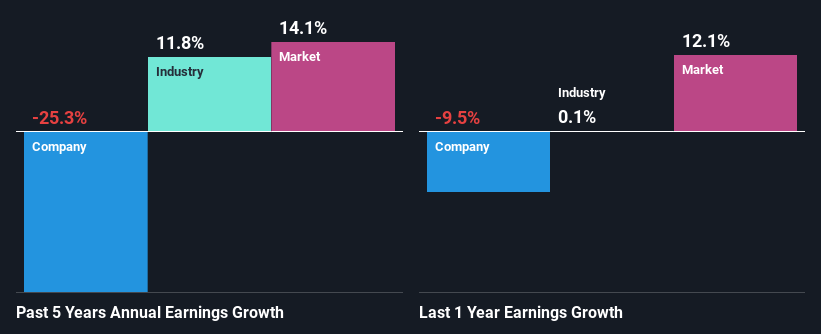Beshom Holdings Berhad (KLSE:BESHOM) has had a rough three months with its share price down 5.3%. To decide if this trend could continue, we decided to look at its weak fundamentals as they shape the long-term market trends. Specifically, we decided to study Beshom Holdings Berhad’s ROE in this article.
ROE or return on equity is a useful tool to assess how effectively a company can generate returns on the investment it received from its shareholders. In simpler terms, it measures the profitability of a company in relation to shareholder’s equity.
View our latest analysis for Beshom Holdings Berhad
How To Calculate Return On Equity?
The formula for return on equity is:
Return on Equity = Net Profit (from continuing operations) ÷ Shareholders’ Equity
So, based on the above formula, the ROE for Beshom Holdings Berhad is:
3.2% = RM11m ÷ RM327m (Based on the trailing twelve months to July 2024).
The ‘return’ is the yearly profit. So, this means that for every MYR1 of its shareholder’s investments, the company generates a profit of MYR0.03.
Why Is ROE Important For Earnings Growth?
Thus far, we have learned that ROE measures how efficiently a company is generating its profits. Based on how much of its profits the company chooses to reinvest or “retain”, we are then able to evaluate a company’s future ability to generate profits. Generally speaking, other things being equal, firms with a high return on equity and profit retention, have a higher growth rate than firms that don’t share these attributes.
Beshom Holdings Berhad’s Earnings Growth And 3.2% ROE
It is quite clear that Beshom Holdings Berhad’s ROE is rather low. Not just that, even compared to the industry average of 16%, the company’s ROE is entirely unremarkable. For this reason, Beshom Holdings Berhad’s five year net income decline of 25% is not surprising given its lower ROE. However, there could also be other factors causing the earnings to decline. For instance, the company has a very high payout ratio, or is faced with competitive pressures.
That being said, we compared Beshom Holdings Berhad’s performance with the industry and were concerned when we found that while the company has shrunk its earnings, the industry has grown its earnings at a rate of 12% in the same 5-year period.


Earnings growth is a huge factor in stock valuation. It’s important for an investor to know whether the market has priced in the company’s expected earnings growth (or decline). By doing so, they will have an idea if the stock is headed into clear blue waters or if swampy waters await. Is BESHOM fairly valued? This infographic on the company’s intrinsic value has everything you need to know.
Is Beshom Holdings Berhad Using Its Retained Earnings Effectively?
Beshom Holdings Berhad has a high three-year median payout ratio of 85% (that is, it is retaining 15% of its profits). This suggests that the company is paying most of its profits as dividends to its shareholders. This goes some way in explaining why its earnings have been shrinking. The business is only left with a small pool of capital to reinvest – A vicious cycle that doesn’t benefit the company in the long-run. To know the 2 risks we have identified for Beshom Holdings Berhad visit our risks dashboard for free.
Moreover, Beshom Holdings Berhad has been paying dividends for at least ten years or more suggesting that management must have perceived that the shareholders prefer dividends over earnings growth. Existing analyst estimates suggest that the company’s future payout ratio is expected to drop to 61% over the next three years. Accordingly, the expected drop in the payout ratio explains the expected increase in the company’s ROE to 6.4%, over the same period.
Summary
On the whole, Beshom Holdings Berhad’s performance is quite a big let-down. Because the company is not reinvesting much into the business, and given the low ROE, it’s not surprising to see the lack or absence of growth in its earnings. With that said, we studied the latest analyst forecasts and found that while the company has shrunk its earnings in the past, analysts expect its earnings to grow in the future. Are these analysts expectations based on the broad expectations for the industry, or on the company’s fundamentals? Click here to be taken to our analyst’s forecasts page for the company.
Have feedback on this article? Concerned about the content? Get in touch with us directly. Alternatively, email editorial-team (at) simplywallst.com.
This article by Simply Wall St is general in nature. We provide commentary based on historical data and analyst forecasts only using an unbiased methodology and our articles are not intended to be financial advice. It does not constitute a recommendation to buy or sell any stock, and does not take account of your objectives, or your financial situation. We aim to bring you long-term focused analysis driven by fundamental data. Note that our analysis may not factor in the latest price-sensitive company announcements or qualitative material. Simply Wall St has no position in any stocks mentioned.
